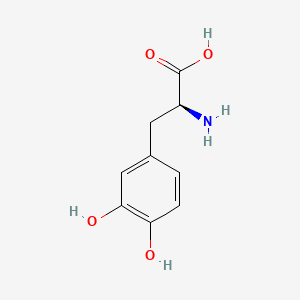In continuation of my update on olaparib
AstraZeneca and Merck & Co., Inc., (Merck: known as MSD outside the US and Canada) announced that the US Food and Drug Administration (FDA) has approved Lynparza for use as maintenance treatment of adult patients with deleterious or suspected deleterious germline or somatic BRCA-mutated (gBRCAm or sBRCAm) advanced epithelial ovarian, fallopian tube or primary peritoneal cancer who are in complete or partial response to 1st-line platinum-based chemotherapy. Patients with gBRCAm advanced epithelial ovarian, fallopian tube or primary peritoneal cancer are selected for therapy based on an FDA-approved companion diagnostic for Lynparza.
This is the first regulatory approval for a PARP inhibitor in the 1st-line maintenance setting for BRCAm advanced ovarian cancer. The approval was based on positive results from the pivotal Phase III SOLO-1 trial in which Lynparza reduced the risk of disease progression or death by 70% in patients with BRCAm advanced ovarian cancer who were in complete or partial response to platinum-based chemotherapy (HR 0.30 [95% CI 0.23-0.41], p<0.0001) compared to placebo.
Dave Fredrickson, Executive Vice President, Head of the Oncology Business Unit, AstraZeneca, said: “Women with ovarian cancer are often first diagnosed with advanced disease, which is associated with poor outcomes. In SOLO-1, Lynparza in the first-line maintenance setting reduced the risk of disease progression or death by 70 percent for patients with BRCAm advanced ovarian cancer. Today’s approval is a critical advancement and brings us closer to our goal of helping these patients achieve long-term remission.”
Roy Baynes, Senior Vice President and Head of Global Clinical Development, Chief Medical Officer, Merck Research Laboratories, said: “The expanded approval of Lynparza based upon the SOLO-1 trial has the potential to change medical practice and reinforces the importance of knowing a woman’s BRCA status at diagnosis. We continue to work in collaboration with AstraZeneca on our overall goal of improving outcomes for patients.”
In the SOLO-1 trial, with median 41 months of follow-up, the median progression-free survival (PFS) for patients treated with Lynparza (n=260) was not reached compared to 13.8 months for patients treated with placebo (n=131). In the trial, 60% of patients receiving Lynparza remained progression-free at 3 years compared to 27% of patients receiving placebo. The data from the SOLO-1 trial can be found in the October 21, 2018, online issue of the New England Journal of Medicine.
The most common adverse reactions (ARs) in ≥10% of patients taking Lynparza in the SOLO-1 trial were nausea (77%), fatigue (67%), abdominal pain (45%), vomiting (40%), anemia (38%), diarrhea (37%), constipation (28%), upper respiratory tract infection/influenza/nasopharyngitis/bronchitis (28%), dysgeusia (26%), dizziness (20%), decreased appetite (20%), neutropenia (17%), dyspepsia (17%), dyspnea (15%), leukopenia (13%), UTI (13%), thrombocytopenia (11%) and stomatitis (11%). The most common Grade ≥3 ARs were anemia (21%) and neutropenia (6%). Dose interruptions due to an AR of any grade occurred in 52% of patients receiving Lynparza and 17% of those receiving placebo. Seventy-two percent (n=186) of patients on Lynparza remained on the recommended starting dose of 300 mg (two 150 mg tablets twice daily) versus 97% (n=126) on placebo. Adverse reactions that most frequently led to discontinuation in patients treated with Lynparza were fatigue (3.1%), anemia (2.3%), and nausea (2.3%). Eighty-eight percent (n=230) of patients on Lynparza continued treatment without an AR-related discontinuation versus 98% (n=127) on placebo.
Kathleen Moore, Co-Principal Investigator of the SOLO-1 trial and Associate Director for Clinical Research, Stephenson Cancer Center at The University of Oklahoma, Oklahoma City, Oklahoma, said: “SOLO-1 is truly a landmark trial in gynecologic cancer. This approval will likely change the way we treat women with BRCA-mutated advanced ovarian cancer. The ability to offer this important first-line maintenance treatment option to eligible patients may slow down or even stop the natural course of disease progression.”
AstraZeneca and Merck are exploring additional trials in ovarian cancer, including the ongoing GINECO/ENGOTov25 Phase III trial, PAOLA-1. This trial is testing the effect of Lynparza in combination with bevacizumab as a maintenance treatment for patients with newly-diagnosed advanced ovarian cancer, regardless of their BRCA status. Results are expected during the second half of 2019.
--------------------------------------------------------------------------------------------------------------------------





